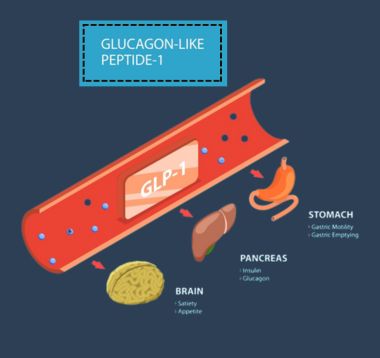GLP-1 (glucagon-like peptide-1) is primarily known for its role in regulating blood sugar and appetite, particularly in the treatment of type 2 diabetes and weight loss in the obese population. However, recent research has indicated that GLP-1 may also play a role in modulating the brain’s reward system, which is crucial in the context of substance abuse.
Here’s how GLP-1 is helping with substance abuse:
i. Reduction in Cravings and Consumption:
- GLP-1 receptors are found in areas of the brain associated with reward and addiction, such as the nucleus accumbens and the ventral tegmental area.
- Activation of these receptors can reduce cravings and decrease the consumption of addictive substances like alcohol, nicotine, and drugs
ii. Neurotransmitter Modulation:
- GLP-1 can influence the release of dopamine, a neurotransmitter heavily involved in the reward circuitry of the brain.
- By modulating dopamine release, GLP-1 can reduce the rewarding effects of addictive substances, making them less appealing.
iii. Behavioral Effects:
- Preclinical studies have shown that GLP-1 receptor agonists can reduce drug-seeking behavior in animal models.
- These effects suggest potential therapeutic benefits in reducing relapse rates and helping individuals maintain abstinence.
iv. Impact on Stress and Anxiety:
- GLP-1 also interacts with stress-related pathways, which can be significant as stress and anxiety often contribute to substance abuse and relapse.
- Reducing stress and anxiety through GLP-1 receptor activation may support recovery and prevent relapse.
v. Metabolic and Reward SystemInteraction:
The metabolic effects of GLP-1, such as regulating appetite and energy balance, thus aiding in weight loss, might also intersect with the reward system, offering a dual approach to managing both metabolic health and substance use disorders.


